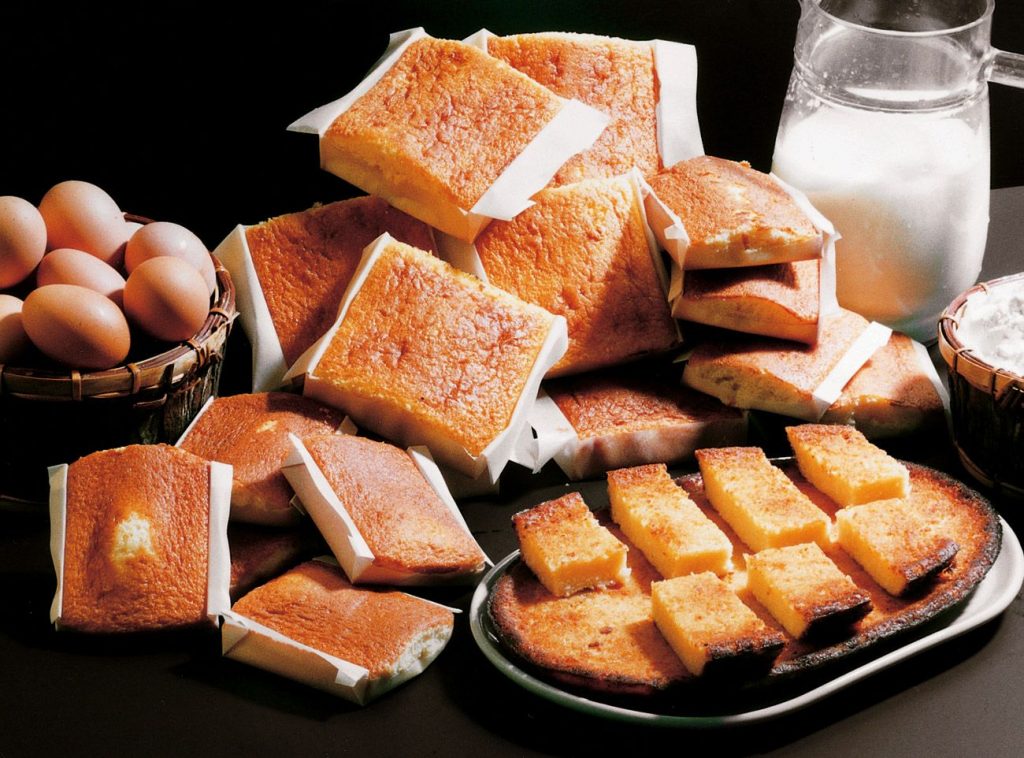Your school trip to Cantabria is not only about sightseeing, hiking and activities. There will also be time in your program to try the traditional dishes of Cantabrian gastronomy. Cold weather stews, delicious sweets, seafood and fish from the Cantabrian Sea… We will take you on a brief tour of the traditional gastronomy of Cantabria so you will know all the typical dishes that you have to try on your school trip to the region.
Seafood and fish dishes are influenced by the sea, but also by the shepherding tradition in the Pasiegos Valleys, which gives free rein to hearty stews and fatty desserts. Discover all about Cantabrian gastronomy in this article.
Traditional gastronomy of Cantabria
Cocidos
In mountainous, northern and cold areas it is common to have the cocido as a typical dish: hot soup that helps to warm up, legumes and vegetables to have all the necessary proteins and different meats to accumulate fats in winter. The most complete meal!
The cocido montañés is a powerful stew typical of the inland villages of Cantabria. White beans and cabbage are its basic ingredients, to which different types of meat such as chorizo, ribs, black pudding or bacon are added. Cocido montañés is eaten all together, without separating ingredients, a great option to recharge your batteries!
On the other hand, in Cantabria there is also the cocido lebaniego, characteristic of the region of Liébana. Although equally powerful as the cocido montañés, the cocido lebaniego differs in the legume, instead of beans it is made with small chickpeas, always accompanied by cabbage and different meat products and a stuffing made with breadcrumbs, egg, chorizo and parsley.
Anchovies from Santoña
Cantabria is a land of fishermen and has one of the most coveted raw materials in the country. Santoña anchovies are a very popular delicacy in the traditional gastronomy of Cantabria. They are produced in a traditional way in this fishing village, and after a meticulous process they are preserved in olive oil, ready to serve. Santoña anchovies are one of the best-known delicacies, also due to the famous canning development of the area, but in the region you can also eat barnacles, razor clams, crabs, clams and shrimps, among other things, as well as fresh fish such as white tuna or sardines. You have to try them all!
Cantabrian cheeses
Cantabrian cheeses are a must-try in any region. In Cantabria we can find three cheeses, for example: the cheese of Cantabria, the cheeses of Liébana and the Picón Bejes-Tresviso cheese, this last one is very typical of the Picos de Europa region, where it is left to mature in its caves for a long period of time.
Rabas
What better appetizer than a snack and a tapa of rabas? These battered fried squid are the queen tapa of this region, always accompanied by half a lemon. Everybody should try the rabas!
Marmita
The marmita is a stew typical of coastal areas traditionally inhabited by fishermen. It is made with potatoes, onion, bell pepper, tomato and white tuna or northern tuna which is the main ingredient of this traditional dish. In Cantabria there is a typical date for tasting this delicacy: on the day of San Roque, August 16, marmite competitions are held in many coastal towns. One of the most famous places to witness the competition is the fishing village of Laredo. In San Vicente de la Barquera it is called Sorropotum.
Desserts
To live the complete Cantabrian experience, you have to finish your tasting of typical dishes with a golden brooch: the desserts of the traditional gastronomy of Cantabria. Sobaos pasiegos are the sweet pastries of the area. They are made with lots of sugar, butter, flour and eggs. You can also try the famous quesada pasiega, a cake made with cow’s milk, butter, wheat flour, eggs and sugar. This cake can be eaten with your hands due to its consistency. Therefore, sobaos and quesada are typical desserts of the Valles Pasiegos of Cantabria.
We recommend the «corbatas de Unquera» and the «pantortilla de Reinosa». Two of the most popular sweets, both made with puff pastry. Once you taste them, you won’t stop.
Where to eat with groups on your school trip to Cantabria?
If you want to eat these delicious typical dishes, we recommend these 10 restaurants in different areas of the region, so you can make the most of your end-of-year trip to Cantabria:
- Cenador de Amós (Villaverde de Pontones)
- Sambal (Noja)
- Sotavento (San Vicente de la Barquera)
- La Aldea (Comillas)
- Restaurante del Hotel del Oso (Camaleño)
- La Casona del Judío (Santander)
- Cadelo (Santander)
- Annua (San Vicente de la Barquera)
- El Albergue de Valvanuz (Selaya)
- El Bar del Puerto (Santander)
Guide to organize your end-of-year trip to Cantabria
We know that teachers have the most difficult task when it comes to planning and organizing the whole trip, so let us help you! Plan your school trip with Natuaventura and you won’t regret it. More than 15 years and hundreds of trips and schools all over the country are our guarantee.
You may also be interested in:
What is the ideal age to attend a summer camp?
Education and values in summer camps.
Summer Camps in Avila, is it worth attending?
The Advantages of summer camps for children of employees.
Best multiaventura camps in Villar Santander.
The history of summer camps and children’s camps in Granada.

